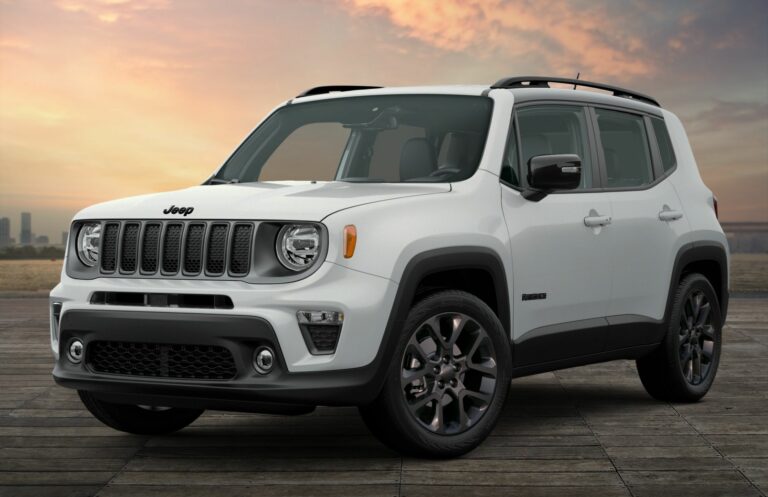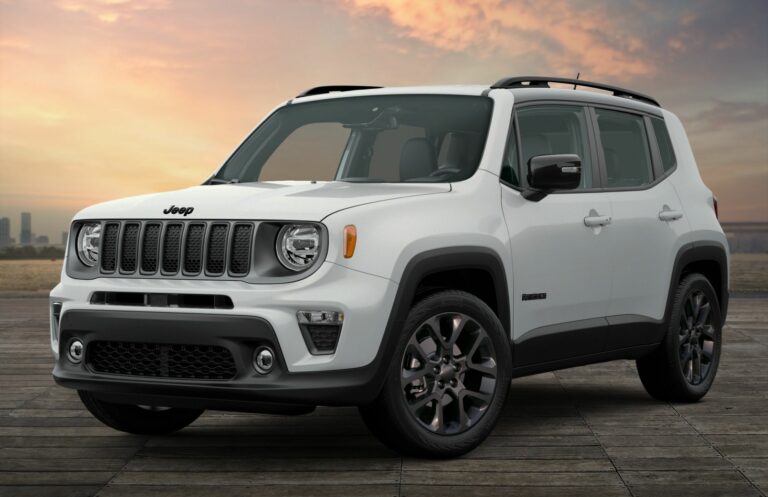1981 Jeep Wagoneer For Sale: Unearthing a Classic American Icon
1981 Jeep Wagoneer For Sale: Unearthing a Classic American Icon jeeps.truckstrend.com
The year 1981 marked a fascinating juncture for the automotive world, a period of transition where classic designs began to meet emerging technologies. Amidst this backdrop, the 1981 Jeep Wagoneer stands out as a true testament to American engineering and timeless design. More than just a utility vehicle, the Wagoneer pioneered the luxury SUV segment, blending rugged off-road capability with a surprising degree of comfort and sophistication. Today, finding a 1981 Jeep Wagoneer for sale isn’t just about acquiring a vintage vehicle; it’s about investing in a piece of automotive history, a lifestyle statement, and a capable classic that continues to turn heads and inspire adventure.
This comprehensive guide will delve into everything you need to know about purchasing a 1981 Jeep Wagoneer, from its enduring legacy and what makes it special, to practical advice on what to look for, where to find one, and what challenges you might encounter.
1981 Jeep Wagoneer For Sale: Unearthing a Classic American Icon
The Enduring Legacy of the 1981 Jeep Wagoneer
Introduced in 1963, the Jeep Wagoneer (SJ platform) held the distinction of being the longest-produced American vehicle on the same platform, running until 1991. The 1981 model year falls squarely within its golden era, predating the "Grand Wagoneer" official branding but offering many of the luxury features that would define that iconic nameplate. By this point, the Wagoneer had evolved into a remarkably comfortable and well-appointed vehicle, moving far beyond its utilitarian roots.
What makes the 1981 model particularly appealing to collectors and enthusiasts is its blend of classic aesthetics with refined engineering. It typically featured the robust AMC 360 cubic inch (5.9L) V8 engine, known for its torque and durability, often paired with a reliable TorqueFlite 727 automatic transmission. Drivetrain options included both part-time four-wheel drive and Jeep’s innovative full-time Quadra-Trac system, offering superior traction on varying surfaces.
The 1981 Wagoneer was available in several trim levels, most notably the base Wagoneer, the Wagoneer Brougham, and the top-tier Wagoneer Limited. The Limited model, in particular, often featured the iconic simulated woodgrain paneling, power windows, power seats, air conditioning, and a plush interior that set it apart from its contemporaries and firmly established its place as a luxury contender. This fusion of rugged capability and upscale appointments solidified the Wagoneer’s reputation as the "original luxury SUV," a concept that remains incredibly popular today.
Why Buy a 1981 Jeep Wagoneer Today?
The allure of a 1981 Jeep Wagoneer for sale extends beyond mere nostalgia. There are compelling reasons why these vehicles continue to command attention in the classic car market:
- Investment Potential: Well-preserved or expertly restored Wagoneers, especially the higher trim levels, have shown steady appreciation in value over the past decade. As fewer original examples remain, their rarity and iconic status contribute to their desirability as a classic car investment.
- Unique Driving Experience: Driving a 1981 Wagoneer is a visceral experience unlike modern SUVs. The powerful V8 rumble, the commanding driving position, the unassisted steering (on some models), and the sheer presence of the vehicle evoke a sense of freedom and adventure. It’s a connection to a bygone era of motoring.
- Versatility and Capability: Despite its age, a well-maintained 1981 Wagoneer remains a highly capable vehicle. Its robust 4×4 system, generous ground clearance, and strong V8 engine make it suitable for off-road excursions, towing, or simply navigating challenging weather conditions. It truly is a go-anywhere luxury vehicle.
- Timeless Style: The Wagoneer’s classic lines, distinctive grille, and especially the famous woodgrain paneling (on Limited models) give it an unmistakable charm. It stands out in a crowd, drawing compliments and sparking conversations wherever it goes. It’s a statement piece that blends vintage cool with undeniable utility.
- Community and Support: The Wagoneer and Grand Wagoneer community is vibrant and dedicated. Owners benefit from a wealth of shared knowledge, online forums, specialized parts suppliers, and experienced mechanics who understand these unique vehicles.


Key Considerations Before Purchase
Before you begin your search for a 1981 Jeep Wagoneer for sale, it’s crucial to understand the commitment involved. These are vintage vehicles, and they come with their own set of considerations:
- Condition is Paramount: This cannot be stressed enough. The condition of the body (especially rust), frame, engine, and drivetrain will dictate the initial purchase price and the extent of any necessary restoration or repairs. A "bargain" project car can quickly become a money pit if you’re not prepared for extensive work.
- Rust: The Wagoneer’s Arch Nemesis: Wagoneers are notorious for rust, particularly in the rear quarter panels, tailgate, floorboards, rocker panels, and frame rails. Thoroughly inspect these areas, even if they appear cosmetically sound. Bubbles in the paint often hide significant underlying corrosion.
- Mechanical Health: The AMC 360 V8 is generally robust, but check for oil leaks, unusual noises, smoke from the exhaust, and proper fluid levels. Test the transmission for smooth shifts. Engage the 4×4 system to ensure it functions correctly. Power accessories (windows, locks, seats) are often problematic due to aging wiring and motors.
- Parts Availability: While many mechanical parts are still available (often shared with other AMC/Jeep vehicles), some specific trim pieces, interior components, or body panels can be challenging to source. Fortunately, a thriving aftermarket and network of specialized suppliers exist to help.
- Fuel Economy: Be realistic. A V8-powered 4×4 from the early 80s is not fuel-efficient. Expect single-digit to low-teen MPG figures.
- Insurance and Maintenance Costs: Consider specialized classic car insurance, which can be more affordable than standard policies. Be prepared for ongoing maintenance and potential repair costs that may be higher than for a modern vehicle due to the age and specialized nature of parts/labor.
Where to Find a 1981 Jeep Wagoneer For Sale
Your search for the perfect 1981 Jeep Wagoneer will likely involve a combination of online and offline avenues:
- Online Auction Sites: Platforms like Bring a Trailer (BaT) and eBay Motors often feature high-quality or unique examples, sometimes with detailed documentation and extensive photo galleries.
- Classic Car Marketplaces: Websites such as Hemmings, ClassicCars.com, and Autotrader Classics are dedicated to vintage vehicles and are excellent resources for finding a wide range of conditions and prices.
- Specialized Dealerships: Some classic car dealerships specialize in vintage SUVs or American classics. They often offer restored or well-vetted examples, though usually at a premium.
- Wagoneer/Jeep Forums & Clubs: Enthusiast communities are invaluable. Members often sell their vehicles directly, and you can get honest assessments and advice from experienced owners.
- Local Classifieds & Word-of-Mouth: Don’t discount local listings or networking within the classic car community. Sometimes the best finds are discovered through personal connections.
What to Look For During Inspection: A Buyer’s Guide
Once you’ve identified a potential 1981 Jeep Wagoneer for sale, a thorough inspection is crucial. If possible, bring a knowledgeable friend or, even better, arrange for a pre-purchase inspection (PPI) by a qualified mechanic familiar with vintage Jeeps.
Exterior:
- Rust: Check wheel wells, rocker panels, tailgate (especially around the window), floor pans, door bottoms, and under the drip rails. Look for bubbling paint, holes, or patched areas.
- Frame: Inspect the frame rails for rust, cracks, or previous repairs, especially near suspension mounting points.
- Body Panels: Check for consistent gaps, signs of accident repair (wavy panels, mismatched paint), and overall alignment.
- Woodgrain (if applicable): Assess the condition of the simulated wood paneling and surrounding trim. Fading, peeling, or missing sections are common.
- Glass & Seals: Look for cracks in the windows and dry, cracked, or missing weatherstripping around doors and windows.
Interior:
- Upholstery: Check for tears, stains, and excessive wear on seats, carpets, and headliner.
- Dashboard: Look for cracks, fading, or warping.
- Power Accessories: Test all power windows, locks, seats, and the tailgate window. These are frequent failure points.
- HVAC: Test the heater and air conditioning (if equipped). The AC system will likely need servicing or conversion to R134a refrigerant.
- Gauges & Lights: Ensure all dashboard lights and gauges are functional.
Under the Hood:
- Engine: Check for oil leaks (common), coolant leaks, and listen for unusual noises (knocking, ticking). Examine belts, hoses, and wiring for age and condition.
- Fluids: Check the color and level of engine oil, transmission fluid, brake fluid, and power steering fluid.
- Battery: Look for corrosion.
- Radiator: Check for leaks or damage.
Underneath the Vehicle:
- Suspension: Look for worn bushings, leaky shocks, or damaged springs.
- Steering: Check for excessive play in the steering wheel, indicating worn components.
- Brakes: Inspect brake lines for rust or leaks.
- Exhaust System: Check for rust, holes, or makeshift repairs.
- Drivetrain: Look for leaks from the transmission, transfer case, and differentials. Check U-joints and driveshafts for play.
Test Drive:
- Engine Performance: Does it start easily? Does it idle smoothly? Does it accelerate without hesitation or unusual noises?
- Transmission: Does it shift smoothly through all gears without slipping or clunking?
- Brakes: Do they feel firm and stop the vehicle effectively without pulling or excessive noise?
- Steering: Is it responsive? Does the vehicle track straight without wandering?
- 4×4 System: If possible and safe, test the 4×4 engagement and disengagement.
- Listen: Pay attention to any unusual squeaks, rattles, clunks, or hums.
Documentation:
- Ask for service records, original owner’s manuals, and any documentation of previous ownership or restoration work.
Common Challenges and Solutions
Owning a 1981 Jeep Wagoneer, while rewarding, isn’t without its quirks. Here are some common challenges and potential solutions:
- Rust: The most significant challenge. Solutions range from minor patch panels and rust encapsulation to full body-off restorations with new sheet metal and extensive fabrication. Regular cleaning and rustproofing are essential for prevention.
- Electrical Gremlins: Aging wiring, corroded connections, and failing switches are common. Patience, a good wiring diagram, and systematic troubleshooting are key. Upgrading grounds and replacing worn components can resolve many issues.
- Fuel System Issues: Carbureted engines can be finicky. Regular carburetor rebuilds, cleaning fuel lines, and replacing fuel pumps are often necessary. Ethanol in modern fuel can also be problematic for older fuel systems.
- Air Conditioning: Original R12 AC systems are often non-functional. Converting to R134a is a common upgrade, but it requires new components.
- Finding Qualified Mechanics: Not all mechanics are comfortable working on vintage vehicles. Seek out specialists or those with experience with older Jeeps/AMC engines. Joining owner communities can help you find recommended shops.
- Parts Sourcing: While many parts are available, some specific trim or interior pieces can be hard to find. Specialized Wagoneer parts suppliers (e.g., BJ’s Off-Road, Team Grand Wagoneer) are invaluable resources.
Practical Advice and Actionable Insights
- Set a Realistic Budget: Factor in not just the purchase price, but also potential restoration costs, immediate repairs, ongoing maintenance, and insurance. A cheaper "project" might cost more in the long run than a well-maintained "driver."
- Be Patient: The right 1981 Wagoneer won’t appear overnight. It may take weeks or months to find a suitable example that meets your criteria and budget.
- Join the Community: Before you even buy, join Wagoneer/Grand Wagoneer online forums and Facebook groups. Learn from experienced owners, ask questions, and tap into their collective knowledge.
- Educate Yourself: Learn about common issues, typical maintenance, and the specific characteristics of the 1981 model year. The more you know, the better prepared you’ll be.
- Don’t Be Afraid to Walk Away: If an inspection reveals too many red flags or the seller isn’t transparent, be prepared to move on. There will always be other Wagoneers.
- Factor in Shipping: If you’re buying remotely, get quotes for enclosed classic car transport.
Price Table: 1981 Jeep Wagoneer For Sale Estimates
The price of a 1981 Jeep Wagoneer for sale varies significantly based on its condition, originality, trim level, and market demand. The Wagoneer Limited, in particular, tends to command higher prices.
| Condition Category | Description | Estimated Price Range (USD) |
|---|---|---|
| Project/Parts | Non-running, significant rust, major mechanical issues, incomplete. Requires extensive work and significant investment. | $1,000 – $5,000 |
| Driver Quality | Running and driving, functional, but shows wear and tear. Minor rust, some cosmetic flaws, needs ongoing maintenance and TLC. | $5,000 – $15,000 |
| Good Condition | Well-maintained, minimal rust, solid mechanics, good interior and exterior presentation. May need minor cosmetic refresh or mechanical tweaks. | $15,000 – $30,000 |
| Excellent/Show | Fully restored or exceptionally well-preserved original. Near-flawless paint, interior, chrome, and mechanicals. Ready for shows. | $30,000 – $60,000+ |
Note: These prices are estimates and can fluctuate based on specific features (e.g., Quadra-Trac, specific options), mileage, provenance, geographic location, and current market trends. Limited models typically fall on the higher end of their respective ranges.
Frequently Asked Questions (FAQ)
Q: What engine typically came in the 1981 Jeep Wagoneer?
A: The vast majority of 1981 Jeep Wagoneers were equipped with the durable AMC 360 cubic inch (5.9L) V8 engine.
Q: Is the 1981 Wagoneer good for off-roading?
A: Yes, absolutely. With its robust frame, solid axles, and capable 4×4 systems (part-time or Quadra-Trac), a well-maintained 1981 Wagoneer is still a very capable off-road vehicle.
Q: Are parts hard to find for a 1981 Wagoneer?
A: While some specific trim or interior components can be challenging to source, many mechanical parts are still available through aftermarket suppliers, NOS (New Old Stock) dealers, or shared with other AMC/Jeep vehicles of the era. Specialized Wagoneer parts vendors also exist.
Q: What kind of fuel economy can I expect?
A: Don’t expect much. The 1981 Wagoneer’s V8 engine and weight mean it’s not fuel-efficient. You’ll likely see single-digit to low-teen miles per gallon (MPG).
Q: Can a 1981 Wagoneer be a daily driver?
A: With proper maintenance and potentially some modernization (like upgraded brakes or AC), a well-restored 1981 Wagoneer can certainly be a reliable daily driver. However, be prepared for higher fuel costs and the quirks inherent in owning a vintage vehicle compared to a modern car.
Q: What’s the difference between a 1981 Wagoneer and a Grand Wagoneer?
A: In 1981, the "Grand Wagoneer" name wasn’t officially used for the entire line (it became the official top trim name in 1984). Instead, the luxury version was typically known as the "Wagoneer Limited," which featured many of the premium amenities and the iconic woodgrain paneling that would later define the Grand Wagoneer. So, when looking at a 1981 model, the Wagoneer Limited is the closest equivalent to what people think of as a "Grand Wagoneer."
Conclusion
The 1981 Jeep Wagoneer stands as a magnificent example of a bygone era of automotive design – a true pioneer in the luxury SUV segment. For those seeking a vehicle with character, capability, and a compelling story, finding a 1981 Jeep Wagoneer for sale presents a unique opportunity. It’s more than just a purchase; it’s an entry into a passionate community, a commitment to preserving automotive history, and an invitation to embark on countless adventures. By understanding its strengths, acknowledging its challenges, and approaching the buying process with diligence, you can secure an iconic piece of American motoring that will continue to deliver timeless style and rugged utility for years to come.







